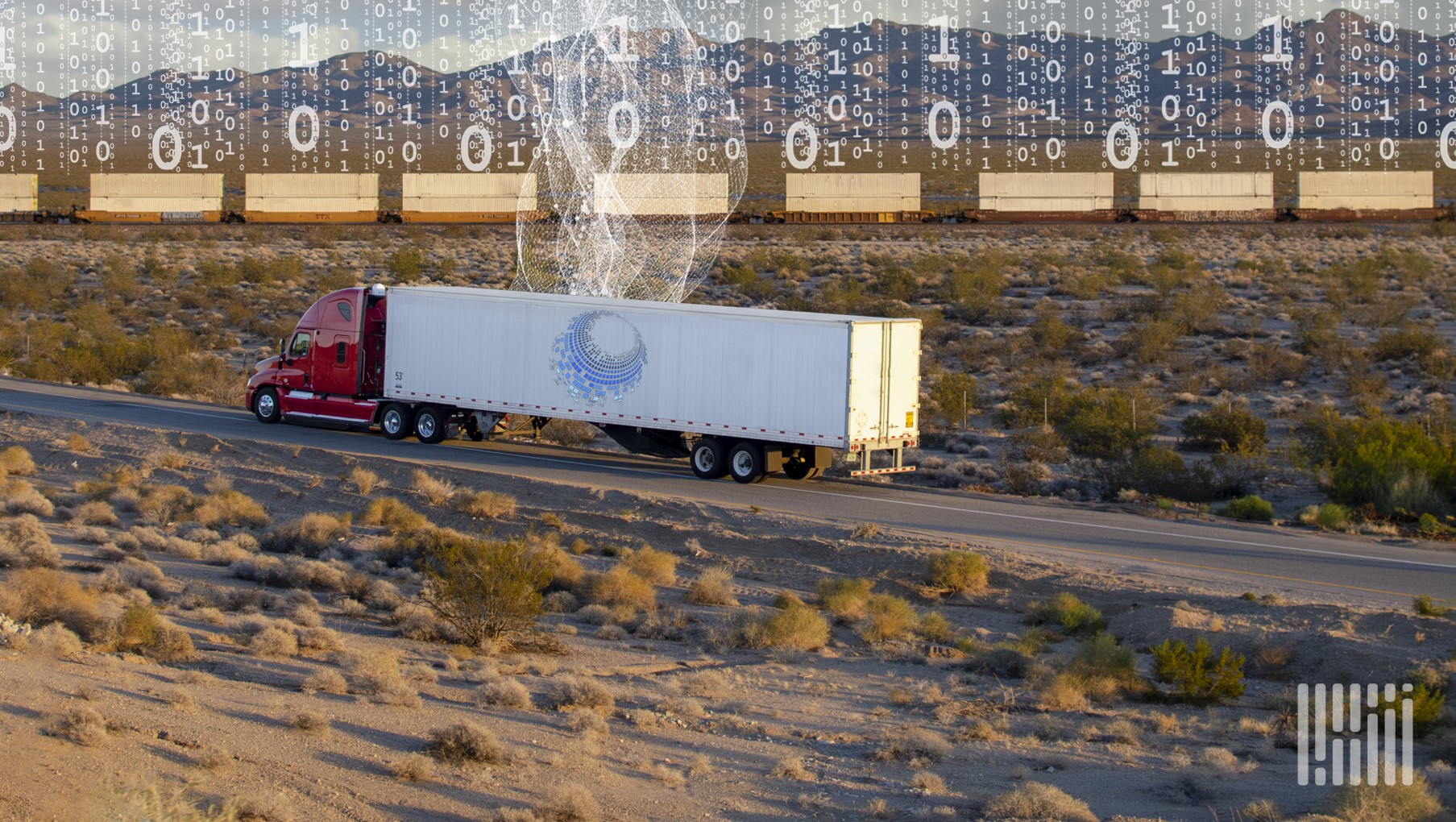Supply chain and logistics operations are central to a company’s ability to operate efficiently and be competitive. With the free flow of data and visibility the keys to a well-run shipping operation, companies need to overcome the challenge of complex networks and disconnected systems that get in the way.
Creating a seamless, consolidated view of what’s happening across the whole supply chain is necessary, which makes a transportation management system (TMS) critical to success.
Decentralized shipping is a thing of the past
The past approach to shipping management that involved juggling information from various sources, such as carriers, warehouses, order management systems, and manual spreadsheets, doesn’t work anymore.
Operating in that way fragments data leading to inefficiencies, errors, and a lack of visibility into shipping operations. Consequently, businesses find they’re incurring higher costs, delays, and frustrating customers more than necessary.
To address these challenges, an increasing number of companies are turning to a TMS to create a more centralized approach.
Understanding what TMS solutions can do
Modern TMS solutions offer several benefits to shippers — including many that save time and money for the users.
The basic capabilities of a TMS include:
- Carrier selection and rate negotiation tools so the best carrier and rates can always be selected.
- Shipment tracking and visibility to keep all stakeholders up to date.
- Robust reporting and analytics to strategically manage the entire logistics network and make better decisions.
These features cover the basics for most shipping operations, enabling businesses to make informed decisions, reduce costs, and improve efficiencies.
Centralized shipping data with a TMS
With improved visibility and access to data the focus of many companies’ supply chain leaders these days, it’s important to highlight a TMS’s ability to consolidate shipping data from multiple sources to eliminate the need for manual data entry and reconciliation across separate systems.
A TMS provides a comprehensive and up-to-date view of all logistics operations by creating a single source for shipping data. With this capability, businesses can monitor the status of shipments in transit, identify potential delays or disruptions, and proactively address issues before they escalate, ultimately improving customer satisfaction and minimizing costly delays.
Enhance shipping operations
Automation is another key benefit of a TMS, enabling businesses to streamline processes such as carrier booking, shipment documentation, invoice payment, and tracking. The technology helps shippers reduce manual effort (and the potential for errors) while improving the team’s efficiency and productivity.
For example, a TMS can consider complex factors like multiple transit times, carriers’ rates, different service levels, and past carrier performance to instantly identify the most efficient and cost-effective transportation options for each shipment.
Effective collaboration and communication across departments are essential for successful shipping operations. A TMS facilitates this by providing a place where stakeholders, including logistics managers, customer service representatives, and accounting teams, can access relevant data and updates, fostering better coordination and decision-making.
Weighing the pros and cons of a TMS
While a transportation management system offers numerous benefits to a shipping operation, it is still necessary to weigh the advantages and potential drawbacks.
Pros: Here are some ways companies and users will benefit from a TMS
- A TMS offers increased visibility and control over logistics operations through centralized data and real-time tracking capabilities
- Companies can gain cost savings from optimized carrier selection, route planning, and reduced manual efforts
- Users will experience improved efficiency and productivity through automation of processes like tendering, booking, and tracking
- Team leaders will gain enhanced decision-making abilities powered by robust reporting and analytics tools
- All stakeholders should benefit from better collaboration and communication across departments involved in shipping operations
- Long-term, companies are positioned for greater scalability to accommodate business growth and changing logistics requirements
Cons: Here are some challenges and hurdles to realizing the benefits of a TMS
If your TMS is not provided by a logistics partner, the upfront costs for software licensing, implementation, and training can be substantial.
- A new TMS can potentially disrupt existing workflows and processes during the implementation phase
- TMS users must be consistent because a TMS relies on accurate and up-to-date data input for optimal performance. Gaining the benefits of centralized data will require system integrations with existing platforms like ERP, WMS, and legacy applications
- There will often be issues with resistance to change and user adoption hurdles among employees accustomed to the old way of doing things
If your TMS is being provided by a partner with deep logistics expertise and a commitment to an intuitive and easy-to-use front-end application, these hurdles can be greatly lessened.
By carefully evaluating these pros and cons in the context of your business’s specific needs and resources, you can decide whether a transportation management system is the right investment for optimizing your shipping operations.
Choosing the right TMS for your business
If you are convinced a TMS can help your company, it’s time to take the next step. When you begin evaluating potential transportation management systems, it’s crucial to assess your specific shipping needs and requirements carefully.
The factors to consider include your freight volumes and the complexity of shipments. This can include the number of carriers and modes you typically utilize and geographic regions.
Another important consideration is opting for a cloud-based or on-premises TMS solution. Cloud-based systems offer the advantages of lower upfront costs, easier scalability, and automatic software updates. At the same time, on-premises solutions may be preferred for businesses with stringent data security or compliance requirements.
Other factors to consider when selecting a TMS include its scalability to accommodate future growth, ease of integration with existing systems (e.g., Enterprise Resource Planning and Warehouse Management Systems (WMS), and user-friendliness for training new employees.
Data migration and integration strategies are other critical components of a successful TMS implementation. Businesses must develop a comprehensive plan for consolidating data from multiple sources into the new system while ensuring data integrity and accuracy.
Lastly, don’t overlook that user adoption is a common challenge when implementing new technology solutions. To mitigate this, businesses may need to invest in comprehensive training programs tailored to the specific roles and responsibilities of different user groups. A TMS that has committed to a fast-to-adopt user experience will greatly help in making training recommendations and getting teams up and running quickly. Additionally, providing ongoing support and resources can ensure long-term user engagement and maximize the TMS’s return on investment (ROI).
Take control of your shipping operations today with a TMS
TMS technology is not just about automating manual shipping tasks. By consolidating logistics data from multiple sources into a single platform, a TMS provides real-time visibility, streamlines operations, and enables data-driven decision-making.
As supply chains become increasingly complex and customer expectations for fast and reliable delivery continue to rise, leveraging TMS technology is necessary for optimizing logistics operations and staying competitive.
A TMS solution will unlock unrealized cost savings, improved efficiency, and enhanced customer satisfaction. Contact Loadsmart to learn how ShipperGuide TMS can start your journey toward more streamlined logistics management.
FAQ
A transportation management system (TMS) is a software platform that helps plan, execute, and optimize the movement of goods. In contrast, a warehouse management system (WMS) is designed to control and streamline operations within a warehouse or distribution center.
The four basic functions of transportation management are routing and scheduling, load planning and optimization, carrier management, and freight auditing and payment.
Transport management includes planning and decision-making processes related to the movement of goods, such as selecting the mode of transportation, managing carriers and rates, optimizing routes, tracking shipments, and ensuring compliance with regulations.


